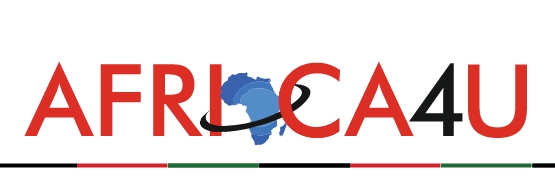The latest economic crises of Sri Lanka and Pakistan have invoked animated debates among Political analysts about China’s economic assistance to many developing countries for building infrastructure.
There has been global out cries, particularly led by the western media about China’s debt trap diplomacy in ensnaring resource rich economies. The recent economic crises in Sri Lanka and Pakistan, the biggest beneficiaries of economic “assistance” from China have been pointed out as glaring examples of theover-dependence on China for economic development. Experts are apprehensive about a similar plight for African economies who are heavily financed by China for their ambitious infrastructure projects.
Experts say that what attracts African countries to China is its funding model. African countries seem to increasingly prefer loans from China mainly to avoid the cumbersome conditions imposed by the IMF and World Bank. For years, the IMF prevented low-income countries from taking up non-concessional, large-size commercial loans. Other Western lenders often rely on the international financial organization’s assessment of countries’ macroeconomic policies and readiness for reforms. The long-term Loansat 2 percent stretching over 25 to 30 years or even morefrom China are attractive to African countries that they cannot get elsewhere. The IMF non – concessional loans may come for a lesser interest, but for a shorter term with a host of conditions.
One can draw a lot of parallels between the economic plights of Sri Lanka, Pakistan and Africa. All of them are heavily indebted to China- for infrastructure projects massively financed by Chinese banks.
The China Pakistan economic corridor project, is part of China’s prestigious Belt and Road Initiative (BRI) connectingPakistan’s Baluchistan with China’s Xinjiang. Last month, the IMF said that Pakistan owes $18.4 billion or one-fifth of its external public debt to China. World Bank report places it as among the top ten world borrowers.
Similarly, Chinese agencies lent huge amounts to Sri Lanka under stiff terms of repayment for building big infrastructure projects. In 2021-22, Colombo’s debt repayment to Beijing amounted to nearly USD 2 billion while Hambantota port has already been leased out to China for 99 years against USD 1.2 billion.
African countries have also been active partners for BRI projects. According to reports, five of Africa’s heavily-indebted countries – Ghana, Kenya, Angola, Ethiopia and Zambia face serious debt risks. According to IMF estimates,China’s total loans to Africa during 2000-18 have been to the tune of USD 148 billion, mostly in large-scale infrastructure projects. The Johns Hopkins University School of Advanced International Studies’, China–Africa Research Initiative report observe that between 2000 and 2019, Chinese financiers signed 1,141 loan commitments worth USD 153 billion with African governments and state-owned enterprises.
While the economies of Africa, Sri Lanka and Pakistanwere staggering under the heavy burden of debt financing and shrinking foreign exchange earnings, the Pandemic hit. The Pandemic further drained the foreign exchange earnings of these countries. Falling foreign remittances over the last few years also worsened the situation derailing the debt financing that was mostly dependent on sectors like tourism and foreign remittances. Subsequently the credit rating agencies moved to downgrade the economies locking them out of international capital markets. Though China refused Sri Lanka’s request for debt- restructuring, 18 African countries have managed to re-negotiate their debts while 12 others are in talks with China.
The Ukraine- Russia war further exposed the vulnerabilities of these fragile economies spelling economic disaster, with skyrocketing inflation, food andfuel shortages, falling trade and weak government finances.
Over dependence on debt, for individual or country is adebilitating situation. Instead of fuelling the economic growth, these loans can misfire. The stiff conditions attached to the Chinese loans and the unexpected disruptions caused by the Pandemic and the Russian war have deteriorated the economic crisis of Africa, Sri Lanka and Pakistan.
The lesson for African countries fuelled by the Chinesedream of rapid economic progress is to exercise caution before embracing economic engagement through debt. If the assistance will push them up the path of progress or down into economic disaster merits hard study.





